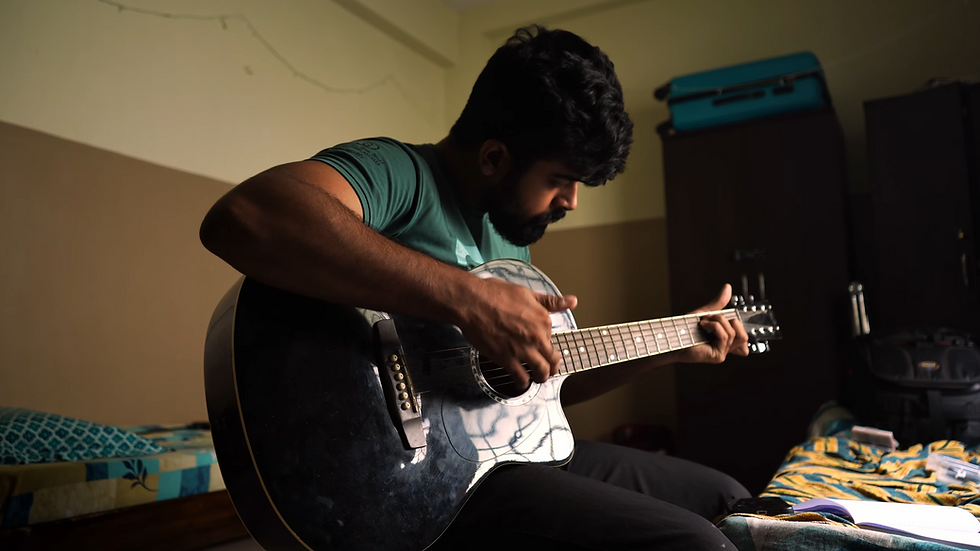Film Review: Baroque Bodies (Ambient Portals)
- Tokyo Cine Mag

- May 8, 2024
- 4 min read
Updated: May 9, 2024
By Pegah Tarkhooni

The world of experimental cinema has a rich history, just like narrative cinema. Experimental is simply introduced as a form of cinema that avoids narrative techniques to achieve its goals, and by using non-traditional methods & non-narrative approaches, utilizing technology and combining science and art, filmmakers attempt to represent simple concepts through the language of science. Since the term "experimental" encompasses a wide range of non-traditional methods, an experimental film is often defined by the methods it utilizes. The aim of such films is often to engage the viewer in a more active and deeper relationship with the subject. Additionally, it should be acknowledged that experimental cinema does not concern itself with the viewer's complete understanding of the story, but rather focuses on the viewer's sensory perception of the film. After watching an experimental film, the goal is not to wonder about what happens at the end but rather to assess whether we enjoyed the film and whether it conveyed a good feeling to us or not.




Laura Splan, an experimental artist and researcher in the field of science and technology, disregards narration in her short film, and focuses entirely on movement, rhythm, and sound without any form of traditional storytelling. With the help of animation and three-dimensional space, we are immersed in a chain of intertwined strands (DNA) preserved and maintained through spherical space and a bubble-like structure: A world which is logically inassicble to the general audience, unless with the help of technology.
Her short film, titled "Baroque Bodies (Ambient Portals)", presents a beautiful aesthetical experience that has its own internal rules, and as viewers identifying the aesthetics of the work, we must contemplate the internal relationships of the work that are not necessarily in harmony with general rules in our world to reach a pleasurable experience. In simpler terms, Laura Splan negates all aesthetic frameworks we have about cinema and recreates her own independent aesthetic framework. However, she also presents other familiar rules in her work that guide our aesthetic experience. She has a concept in mind that she wants to create a language for and it can be said that she has succeeded in doing so.

At first glance, by entering an unfamiliar and unknown space consisting of DNA strands, what catches our attention as viewers are distorted images of the sky, trees, mountains, and earth on these strands, images that are familiar to the audience and prevent them from become confused, despite their limited knowledge of genetics and molecular models. We see these simple images and calming colors inspired by nature including green and blue. What Laura Splan deliberately asks of us is to break free from our usual every day habits and strive in a new way to answer simple questions about the philosophy of human life. She shows us what she wants through scientific language and her complete mastery and awareness of her goal, and we understand what she shows us in a simple way.
By showing a part of human existence that actually has an external existence but is not apparent, the director tries to convey a simple message and concept to the viewer. A message that resides within him/her (the human self) and is passed on to future generations through intertwined strands called DNA and directly or indirectly (we leave the explanation of why to specialists and scientists) affects their lives. After watching Laura Splan's short and insightful film, the viewer is not necessarily concerned with how genetic information is transmitted but perhaps only engages with one issue, which is exactly what the director intended: what information?
Splen creatively delves into scientific concepts and demystifies them in a way that easily connects with the audience: by creating a new and unique cinematic experience that the viewer has not seen before. The question arises for the curious viewer whether climate change, environmental changes, and what generally happens in the external environment affect human genetics?
Laura Splan has succeeded in presenting abstract concepts for the audience to contemplate in her micro film without the use of dialogue or actors, using a simple yet creative approach. Her achievement lies not only in transforming her subject matter into a good film using minimalist and modern techniques but also in leaving the viewer's interpretation of the work open by utilizing these abstract concepts. For one viewer, this film may symbolize the evolution and progress of humanity over centuries, while for another viewer, it may serve as a warning about the destruction of the planet earth. It seems that the filmmaker intentionally wanted to leave the interpretations of the film open; as otherwise, she could have directed the viewer's thoughts by providing explanations or hints. We must remember that apart from all the interpretations we have mentioned above, the film also has another aspect, which is its visual experience. In terms of visual techniques, the film also succeeds in achieving remarkable aesthetic statics: Through the use of colors, layout and arrangement of details, camera movements and the designed images. Even if we have no interest in philosophical concepts, we can still enjoy the visual beauty of this short film. It’s a unique audiovisual experience.




Comments